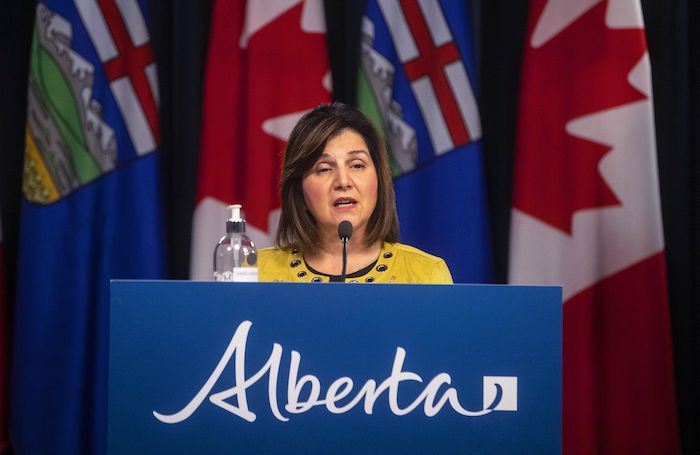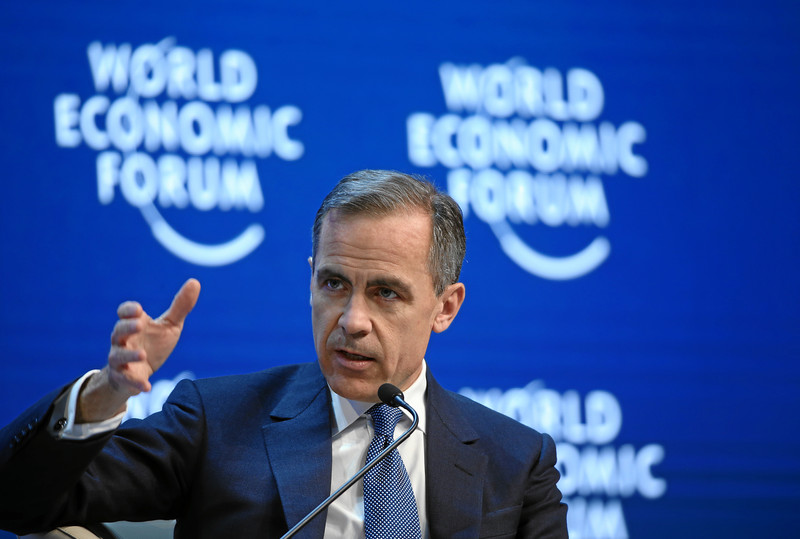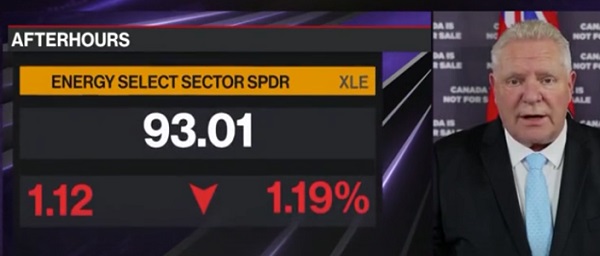Alberta
Province pumping up support for growing school enrolment

Supporting more students in classrooms
Budget 2023 provides more than $820 million over the next three years to support enrolment growth in schools.
Based on strong population growth in Alberta, a large increase in student enrolment is expected in September 2023.
“With Alberta’s rising population, we know many school authorities across the province continue to face growing enrolment pressures. Our strong funding commitment in Budget 2023 will empower school authorities to hire more teachers and obtain more resources for students.”
Over the next three years, Education’s operating expense is increasing by nearly $2 billion. This will support the hiring of approximately 3,000 education staff, including teachers, educational assistants, bus drivers and school support staff, and will help authorities manage growing class sizes.
Funding increases for enrolment will be provided to school authorities through existing grants that include enrolment components. This includes the Early Childhood Services and Grades 1-9 Base Instruction grant and the High School (Grades 10-12) Base Instruction grant, as well as grants in the services and supports category, such as Specialized Learning Support, English as an Additional Language, and Program Unit Funding. The Operations and Maintenance grant also includes an enrolment component. The flexible funding provided allows local authorities to make decisions on how to best use the funding to support their students.
The Funding Manual for School Authorities 2023/24 School Year and projected operational funding profiles are being released March 9, providing school authorities with their funding information for the coming year.
“ASBA is pleased that government has been responsive to school boards’ requests for early release of the funding manual and operational funding profiles, as it assists in informed decision-making. Government’s investment in enrolment growth is welcome news as boards address the growing, diverse and complex student needs within their divisions while remaining accountable to their communities.”
“This funding announcement is timely and much appreciated. In the 2022-23 school year, enrolment at the Calgary Board of Education has grown by more than 5,800 students and we are projecting another significant increase next year. This investment means we can hire additional teachers, educational assistants and other staff to support our growing student population.”
“As one of the fastest-growing school divisions in the province, the funds provided for enrolment growth will help Rocky View Schools hire more staff to support the 1,000 new students we will welcome in the fall. Knowing additional funding will be available is positive news, as RVS continues to experience increasing enrolment pressures across the division.”
“The CASS board of directors recognizes the importance of supporting enrolment growth while maintaining sustainable support for all boards. The early release of the funding manual will assist school authorities in initiating planning needs for the 2023-24 school year.”
“The investment in enrolment growth of Budget 2023 and other increases in grants are most welcome and will greatly help school authorities face significant challenges including high inflation and labour shortage. The association also appreciates the timeliness of the release of the funding manual and recognizes the extraordinary work of the department staff to make this possible.”
Budget 2023 secures Alberta’s future by transforming the health-care system to meet people’s needs, supporting Albertans with the high cost of living, keeping our communities safe and driving the economy with more jobs, quality education and continued diversification.
Quick facts
- Last fall, the government announced a new supplemental enrolment growth grant that provided school authorities with more than $21 million in additional funding. This grant will continue to be available in the 2023-24 school year.
- Alberta Education introduced the Supplemental Enrolment Growth (SEG) grant in the 2022-23 school year to support school authorities with significant enrolment growth.
- The SEG grant provided additional per-student funding for authority enrolment growth of more than two per cent in the 2022-23 school year. The SEG grant, in addition to weighted moving average-based allocations, will provide additional funding to school authorities that have significant growth.
- Over the next three years, the government will provide school authorities with more than $820 million in additional funding to support enrolment growth.
- In the 2020-21 school year, school boards were funded for about 730,000 students and actual attendance was 705,000.
- In the 2021-22 school year, school boards were funded for about 730,000 students and attendance was about 716,000.
- The robust financial health of school jurisdictions continues to be demonstrated by taxpayer funded reserves, reported to be $407 million as of Aug. 31, 2022.
Alberta
Big win for Alberta and Canada: Statement from Premier Smith

Premier Danielle Smith issued the following statement on the April 2, 2025 U.S. tariff announcement:
“Today was an important win for Canada and Alberta, as it appears the United States has decided to uphold the majority of the free trade agreement (CUSMA) between our two nations. It also appears this will continue to be the case until after the Canadian federal election has concluded and the newly elected Canadian government is able to renegotiate CUSMA with the U.S. administration.
“This is precisely what I have been advocating for from the U.S. administration for months.
“It means that the majority of goods sold into the United States from Canada will have no tariffs applied to them, including zero per cent tariffs on energy, minerals, agricultural products, uranium, seafood, potash and host of other Canadian goods.
“There is still work to be done, of course. Unfortunately, tariffs previously announced by the United States on Canadian automobiles, steel and aluminum have not been removed. The efforts of premiers and the federal government should therefore shift towards removing or significantly reducing these remaining tariffs as we go forward and ensuring affected workers across Canada are generously supported until the situation is resolved.
“I again call on all involved in our national advocacy efforts to focus on diplomacy and persuasion while avoiding unnecessary escalation. Clearly, this strategy has been the most effective to this point.
“As it appears the worst of this tariff dispute is behind us (though there is still work to be done), it is my sincere hope that we, as Canadians, can abandon the disastrous policies that have made Canada vulnerable to and overly dependent on the United States, fast-track national resource corridors, get out of the way of provincial resource development and turn our country into an independent economic juggernaut and energy superpower.”
Alberta
Energy sector will fuel Alberta economy and Canada’s exports for many years to come

From the Fraser Institute
By any measure, Alberta is an energy powerhouse—within Canada, but also on a global scale. In 2023, it produced 85 per cent of Canada’s oil and three-fifths of the country’s natural gas. Most of Canada’s oil reserves are in Alberta, along with a majority of natural gas reserves. Alberta is the beating heart of the Canadian energy economy. And energy, in turn, accounts for one-quarter of Canada’s international exports.
Consider some key facts about the province’s energy landscape, as noted in the Alberta Energy Regulator’s (AER) 2023 annual report. Oil and natural gas production continued to rise (on a volume basis) in 2023, on the heels of steady increases over the preceding half decade. However, the dollar value of Alberta’s oil and gas production fell in 2023, as the surging prices recorded in 2022 following Russia’s invasion of Ukraine retreated. Capital spending in the province’s energy sector reached $30 billion in 2023, making it the leading driver of private-sector investment. And completion of the Trans Mountain pipeline expansion project has opened new offshore export avenues for Canada’s oil industry and should boost Alberta’s energy production and exports going forward.
In a world striving to address climate change, Alberta’s hydrocarbon-heavy energy sector faces challenges. At some point, the world may start to consume less oil and, later, less natural gas (in absolute terms). But such “peak” consumption hasn’t arrived yet, nor does it appear imminent. While the demand for certain refined petroleum products is trending down in some advanced economies, particularly in Europe, we should take a broader global perspective when assessing energy demand and supply trends.
Looking at the worldwide picture, Goldman Sachs’ 2024 global energy forecast predicts that “oil usage will increase through 2034” thanks to strong demand in emerging markets and growing production of petrochemicals that depend on oil as the principal feedstock. Global demand for natural gas (including LNG) will also continue to increase, particularly since natural gas is the least carbon-intensive fossil fuel and more of it is being traded in the form of liquefied natural gas (LNG).
Against this backdrop, there are reasons to be optimistic about the prospects for Alberta’s energy sector, particularly if the federal government dials back some of the economically destructive energy and climate policies adopted by the last government. According to the AER’s “base case” forecast, overall energy output will expand over the next 10 years. Oilsands output is projected to grow modestly; natural gas production will also rise, in part due to greater demand for Alberta’s upstream gas from LNG operators in British Columbia.
The AER’s forecast also points to a positive trajectory for capital spending across the province’s energy sector. The agency sees annual investment rising from almost $30 billion to $40 billion by 2033. Most of this takes place in the oil and gas industry, but “emerging” energy resources and projects aimed at climate mitigation are expected to represent a bigger slice of energy-related capital spending going forward.
Like many other oil and gas producing jurisdictions, Alberta must navigate the bumpy journey to a lower-carbon future. But the world is set to remain dependent on fossil fuels for decades to come. This suggests the energy sector will continue to underpin not only the Alberta economy but also Canada’s export portfolio for the foreseeable future.
-

 2025 Federal Election2 days ago
2025 Federal Election2 days agoCanada Continues to Miss LNG Opportunities: Why the World Needs Our LNG – and We’re Not Ready
-

 International19 hours ago
International19 hours agoGermany launches first permanent foreign troop deployment since WW2
-

 2025 Federal Election2 days ago
2025 Federal Election2 days agoMainstream Media Election Coverage: If the Election Was a NHL Game, the Ice Would be Constantly Tilted Up and to the Left
-

 2025 Federal Election22 hours ago
2025 Federal Election22 hours agoPoilievre To Create ‘Canada First’ National Energy Corridor
-

 International1 day ago
International1 day agoFREE MARINE LE PEN!’: Trump defends French populist against ‘lawfare’ charges
-

 COVID-1918 hours ago
COVID-1918 hours agoMaxime Bernier slams Freedom Convoy leaders’ guilty verdict, calls Canada’s justice system ‘corrupt’
-

 Health2 days ago
Health2 days agoSelective reporting on measles outbreaks is a globalist smear campaign against Trump administration.
-

 2025 Federal Election2 days ago
2025 Federal Election2 days agoMark Carney is trying to market globalism as a ‘Canadian value.’ Will it work?







